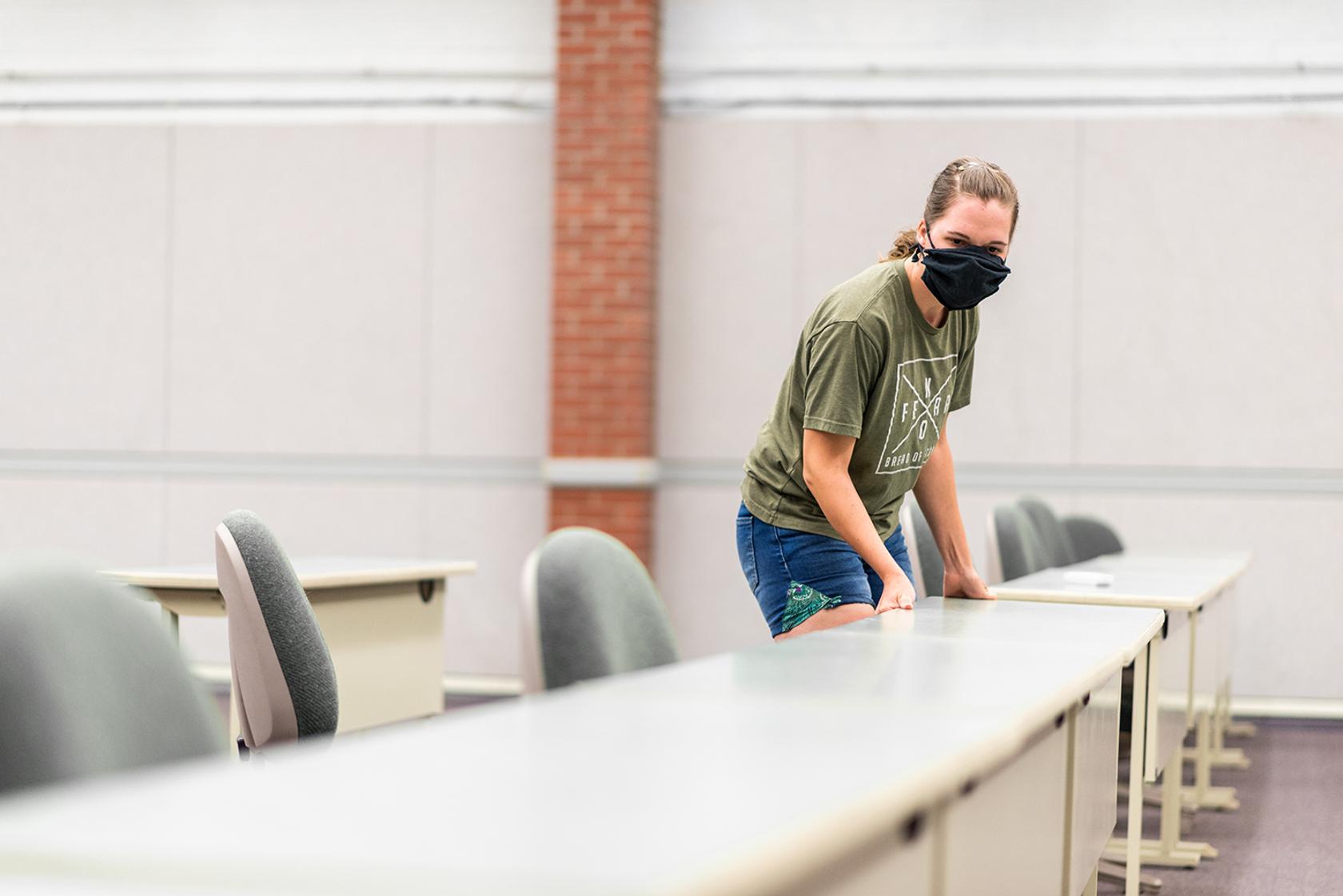Moving forward: Kelce gets innovative to ensure spacing, traffic flow
Monday, July 27, 2020 9:30 AM
Academics, News
Pittsburg, KS

Editor’s note:
This is the fifth in a series of stories that is exploring the ways in which Pittsburg State University, the community's largest employer and education provider, has been preparing all summer for the fall semester in an effort to be as safe as possible during the COVID-19 pandemic. Stories are focusing on specific aspects of campus life, including academics in each of the university’s four colleges, recreation, student health, and more.
Q. How is one of most heavily trafficked colleges at Pittsburg State University working this summer to ensure students and facultyare able to complete coursework amidst the COVID-19 pandemic when school resumes this fall?
A. Kelce College of Business Dean Paul Grimes began by appointing a task force to explore options; it included representatives from majors throughout the college and was led by Associate Professor Lynn Murray.
Several times a week, Grimes meets with other deans to collaborate, coordinate, and share best practices.
The guiding principle: to continue to be among the nation’s leading business schools for quality, high standards, and value, while keeping students, faculty, industry partners, and visitors safe.
Capacity
“In looking at capacity, we have a lot of challenges to Kelce, given its age,” Grimes said. “Our classrooms are very old-fashioned in the way they’re configured, and some are crowded even in the best of circumstances.”
A capital campaign has been underway in recent years for a completely reimagined and innovative learning space for Kelce Hall, which was built in 1950, but the pandemic meant innovation needed to occur now.
“With strategic thinking, we were able to reduce classes to a third of their capacity,” Grimes said.
A magic bullet: reopening one of the largest rooms in the building, an auditorium used long ago by Playhouse on Broadway, and in more recent years by the PSU band and orchestra programs, which now use the Bicknell Family Center for the Arts. This fall, it will be used by the college’s largest courses: management, marketing, and economics.
“It’s 2,000 square feet, and we think we can get 50 or 60 in there with plenty of social distancing,” Grimes said.
Staff moved furniture out of Room 111 that was in a highly congested area, added it to the auditorium, and in coming weeks will install a projector and screen on the stage and add white boards. ITS is working to ensure wi-fi connectivity.
“With the rest of our schedule, we had to completely rebuild it in terms of which class we could get into which room,” Grimes said. “No one is teaching the same rooms they were originally. Some went to a hybrid model, some will use Hyflex, and some will be completely online.”
Directing traffic
The college also overhauled the directional traffic flow through hallways.
“Our building is so old, our hallways aren’t as wide as they normally would be in some of the more modern buildings,” Grimes said. “Our solution was a double yellow line — a stripe down the middle just like on roads. That means no passing!”
Students will enter through the southeast door — the one closest to the Oval — and exit through the southwest door. The east stairway will be used by students going up, and the west stairway will be used by students going down.
Directional signage is being installed, Grimes noted.
Computer labs
Another challenge: computer labs, heavily used by Computer Information Systems majors.
“They do a lot of their courses in small lab settings,” Grimes said.
Two labs on the second floor don’t allow for social distancing, so those students will now use large, general purpose labs on the first floor.
Additionally, ITS has been working on making software packages available to students on their own computers.
“We’ve been working on all of this since May,” Grimes said. “Every faculty member we asked who had to change their format has agreed to, and that speaks volumes to the faculty we have here. Staff, too. They all have a willingness to roll up their sleeves and make it happen because it’s important.”
Caption: Staff have worked this summer in Kelce Hall to create and implement a plan for reducing capacity in smaller classrooms, overhaul a large auditorium into a spacious classroom for larger courses, and install directional signage.